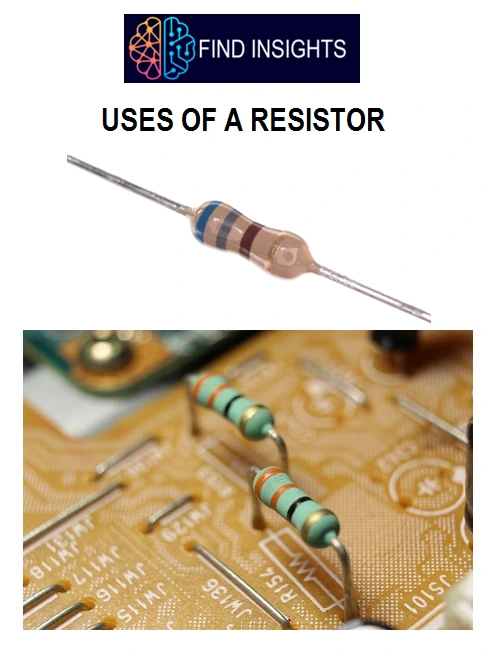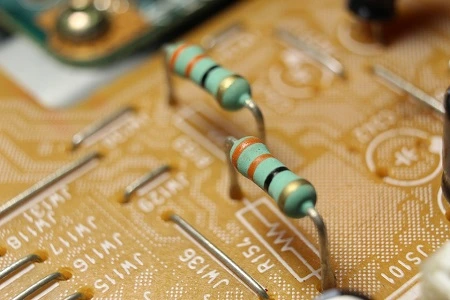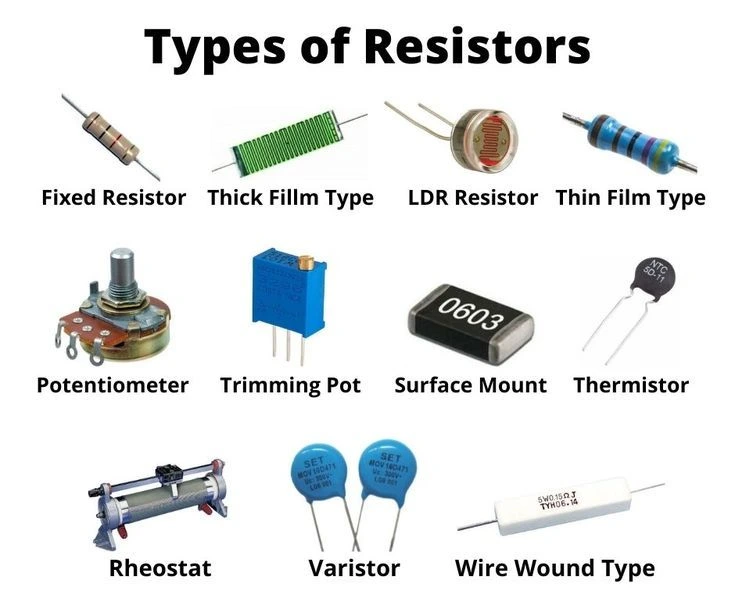
Introduction: Uses of a Resistor
Resistor is a passive two-terminal electrical component that implements electrical resistance as a circuit element. Let’s see the various uses of a Resistor
What is a Resistor in Electronics?

- Resistor is electrical or electronic components which resist the flow of current across the resistor device.
- Resistor values are expressed in Ohms, the electric resistance unit. Many types of resistors are used having different uses and construction. The most common types have a fixed value of resistance so are often called fixed resistors.
The Function of Resistor

- The resistance to current flow results in a voltage drop across the resistor device. Resistors are used extensively throughout electrical and electronic circuits.
- Resistor devices may provide a fixed, variable, or adjustable value of resistance. Adjustable resistors are refers to as rheostats, or potentiometers.
- Fixed resistors have resistances that only change slightly with temperature, time or operating voltage.
- Variable resistors can be used to adjust circuit elements (such as a volume control or a lamp dimmer), or as sensing devices for heat, light, humidity, force, or chemical activity.
What does a Variable Resistor do?

- Variable resistors consist of a resistance track with connections at both ends and a wiper which moves along the track as you turn the spindle. The track is usually rotary but straight track versions, usually called sliders, are also available.
- The track may be made from carbon, cermet (ceramic and metal mixture) or a coil of wire (for low resistances). Variable resistors are often called potentiometers in books and catalogues.
- They are specified by their maximum resistance, linear or logarithmic track, and their physical size. Variable resistors may be used as a rheostat with two connections (the wiper and just one end of the track) or as a potentiometer with all three connections in use
Types of Resistor

- Fixed resistor
- Non-Linear Resistors. Types of non-linear resistors are varistors, thermistors and photoresistors.
- Metal-Film Resistors
- Metal Oxide Resistors
- Thick Film Resistors
- Thin Film Resistors
- Carbon Composition Resistors
- Ceramic Composition Resistors
- Wire wound Resistors
- High Precision Resistors
- Neutral Grounding Resistors
- Dynamic Braking Resistor
- Rheostat
- Variable resistors or Potentiometer
Uses of a Resistor
There are various uses of a Resistor. The following are some uses of resistor
- It is used to Drop voltage
- Limit current
- Attenuate signals
- Act as heaters
- Act as fuses
- It is used Furnish electrical loads
- Divide voltages.
- Resistors are used in high frequency instrument.
- Resistor is used in power control circuit.
- It is used in DC power supplies.
- Resistors are used in filter circuit networks.
- Used in amplifiers, oscillators, telecommunication and digital multimeter.
- It is used in wave generators.
- Resistors are used in transmitters, modulators and demodulators.
- It is used in medical instrument.
- Used in instrumentation applications.
- Resistor is used in voltage regulators.
- It is used in feedback amplifiers.
- Used in LEDs and also transistor
RESISTOR FAQ
What is a resistor used for?
A resistor is an electrical component that limits or regulates the flow of electrical current in an electronic circuit. Resistors are used extensively throughout electrical and electronic circuits.Resistor devices may provide a fixed, variable, or adjustable value of resistance.
What are the 4 types of resistors?
- Thermistors.
- Photo Resistor or LDR (Light Dependent Resistors)
- Surface Mount Resistors.
- Varistor Resistors
What is resistor and its unit?
Resistor is electrical or electronic components which resist the flow of current across the resistor device. It is expressed in Ohms, the electric resistance unit.
What are 5 examples of resistors?
- Street Lighting
- Laptop and Mobile Chargers
- Temperature Control
- Fan Speed Controller
- Measuring Electrical Current
- Temperature Sensor
Where is a resistor used in real life?
Resistor is used in appliances such as electric heaters, electric ovens, and toasters. All these appliances use resistors to turn current into heat.
LIKE WHAT YOU’RE READING?
CHECK OUT SOME OF OUR OTHER GREAT CONTENT HERE:
- LVDT- CONSTRUCTION, WORKING PRINCIPLE , APPLICATIONS, ADVANTAGES, AND DISADVANTAGES
- HOW AN IGBT WORKS?
- SCR VI CHARACTERISTICS EXPLAINED IN DETAIL
- STEP UP TRANSFORMER: DEFINITION, CONSTRUCTION, WORKING & APPLICATIONS
- LIMITATIONS OF OHM’S LAW
- INDUCTION MOTOR: WORKING PRINCIPLE, TYPES & APPLICATION
- STRAIN GAUGE WORKING PRINCIPLE
- TYPES OF LIGHTNING ARRESTER
- WHAT IS OPERATING SYSTEM AND ITS TYPE
- WHAT ARE THE USES OF CAPACITOR
- HOW THE MOSFET WORKS?
- POWER FACTOR IMPROVEMENT METHODS
- WORKING PRINCIPLE OF SYNCHRONOUS MOTOR
- SYNCHRONOUS MOTOR STARTING METHOD
- WHY THE SYNCHRONOUS MOTOR IS NOT SELF STARTING
- WHAT IS A UNIVERSAL MOTOR ?
- WORKING OF AN INDUCTOR – EXPLAINED




8 Comments